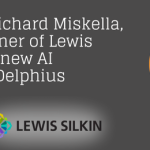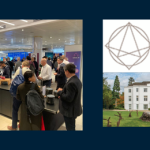Legal IT Insider spoke with LexisNexis’ CEO Sean Fitzpatrick about Protégé, the sector’s readiness for agentic AI, and opening up black box AI
LexisNexis Legal & Professional today (21 July) announced the UK launch of LexisNexis Protégé, its personalised, agentic AI assistant.
Protégé, unveiled in beta last August and available in the United States since January, can autonomously complete tasks based on user goals, including reviewing its own work and identifying areas where it can improve its own output. Use cases include drafting transactional documents as well as litigation motions, briefs and complaints.
Users are able to upload tens of thousands of legal documents to Protégé’s Vault. On each Vault, users can perform numerous AI tasks such as summarize, draft, and/or research. It will replace the existing Lexis+ AI assistant.
Protégé can be personalized and grounded in a customer’s own documents and past work product via DMS integration as well as the LexisNexis repository of legal content and metadata. DMS integrations include iManage, NetDocuments, Sharepoint and others. Protégé recently received media attention because it is now available in Harvey to enable users to access a limited amount of LexisNexis data.
Speaking to Legal IT Insider about Protégé and the legal sector’s readiness for agentic AI, LexisNexis’ CEO Sean Fitzpatrick said that it is truly agentic, commenting: “I think we’re overcoming the trust issues in a couple of different ways. Hallucinations have received a lot of attention, so we try to make everything clickable. If there’s a case highlighted, you can click on it and immediately see the Shepard’s Report, so you know it’s good case law and in our system. Then there’s the black box element: ‘what is this thing doing behind the scenes?’ And that’s where a lot of the agentic activity is happening. There’s a query. That query goes to a planner agent. That planner agent says, ‘OK, well, this is the intent of the user. So let me break that down into a bunch of different tasks, and I’m going to assign those different tasks out to different models who will complete those tasks. They’ll send them back to me. I’ll organize them, put together a single answer and provide it back.’ So it’s going through that agentic process. We’re going to open up that black box so people are going to be able to see what’s going on inside it. And then we’re going to give them control so they can say, ‘Oh, actually, no, you misunderstood my intent. I didn’t want you to do this. I wanted you to do that.’ So the user will, in the future, be able to have input into how the agentic processes are working.”
Adoption of GenAI tools in the legal sector remains a challenge, and Fitzpatrick said: “A lot of it’s around trust, a lot of it’s around data security and privacy. Firms absolutely should be doing all that due diligence and they’re doing an amazing job of it.”
However he added: “It is the fastest growing product that we’ve had in the 20 years that I’ve been at LexisNexis and I’ve never seen anything grow like it. So while adoption may seem slow, in my experience, it’s happening at a pace that we haven’t seen before.”
Protégé is available across LexisNexis products, including the Lexis+ AI legal workflow solution and in the Microsoft Word drafting solution, Lexis Create+.
LexisNexis developed Protégé by working closely with a number of customers across the industry. These firms included Eversheds Sutherland International and Irwin Mitchell. Eleanor Windsor, partner and director of knowledge at Irwin Mitchell, commented: “Working closely with LexisNexis during the development of Protégé has given us the opportunity to help shape a tool that genuinely addresses the practical demands of legal work. The technology will save our teams time and allow them to focus more on strategic client matters.”
To learn more about LexisNexis Protégé capabilities, visit www.lexisnexis.com/protege.












